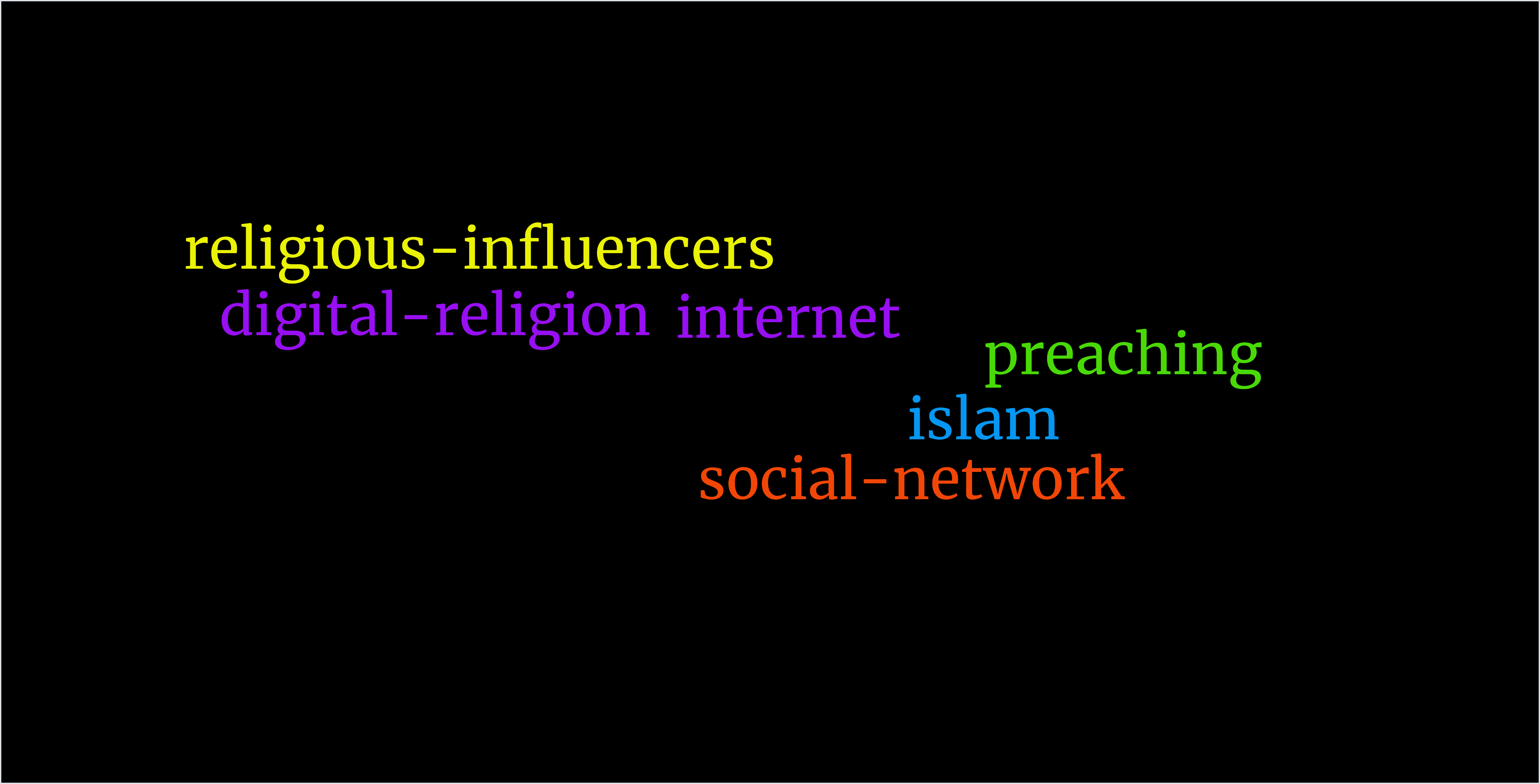Social Networks as a Tool for Islamic Preaching
Abstract
 Abstract Views: 0
Abstract Views: 0
In Kazakhstan, social media platforms play a significant role in the dissemination of Islamic teachings. Therefore, the current study aimed to explore the utilization, integration, and significance of these social networks in helping advance the Islamic values within the context of Kazakhstan. The study sought to analyse the evolution and modernization of traditional religious messages, key development pathways, content characteristics, unique traits, presentation formats, and the engagement of prominent figures during the digital age. Preaching Islam through social media is rapidly growing, with evolving topics and shifting content, reflecting ongoing refinement of strategies. To broaden their reach and captivate audiences, preachers hone diverse techniques and increasingly incorporate psychological support, guidance, goal-setting, and motivational themes into their discussions. Social media platforms foster individual religious figures to enhance their visibility and expand their follower base, spurring competition and encouraging the rise of religious influencers. The online prominence of these preachers often serves charitable causes as well as commercial interests. The burgeoning role of social networks in promoting Islam in Kazakhstan is noteworthy. This is because it possesses significant potential to shape religious socialization and influence the development of Islamic beliefs and perspectives.
Downloads
References
Alahi, Shan A., and Nazmul H. “Role of Information Technology on Preaching Islam (Da’wah).” American International Journal of Research in Humanities, Arts and Social Sciences 9. no, 6 (2017): 172–78.
Arzroomchilar, Ehsan. “Social Media and Religiosity; a (Post)Phenomenological Account,” Journal for the Study of Religions and Ideologies 21, no. 63 (2022): 96–112.
Bunt, Gary R. Hashtag Islam: How Cyber-Islamic Environments Are Transforming Religious Authority. North Carolina: University of North Carolina Press, 2018.
—. Islam in the Digital Age: E-Jihad, Online Fatwas and Cyber Islamic Environments. Pluto Press, 2003, https://doi.org/10.2307/j.ctt18fs6ck.
Çuhadar, M. (2015). Dijitalleşen din ve Diyanet (Digitalizing Religion and Media). Çamdereli, B. Önay Doğan, & N. Kocabay Şener içinde, Dijitalleşen Din (Medya ve Din 2) Köprü Yayınları, İstanbul, 175-222.
De Veirman, Marijke., Veroline Cauberghe, and Liselot Hudders. “Marketing through Instagram Influencers: The Impact of Number of Followers and Product Divergence on Brand Attitude.” International Journal of Advertising, 36. No, 5 (2017): 798–828, doi:10.1080/02650487.2017.1348035
Desi, Erawati., Agus Indiyanto, and Arkan Syafera. “The Construction of the Millennial Generation Religious Vision through Digital Literacy.” Journal for the Study of Religions and Ideologies 22. no, 65 (2023): 159–74.
Erwin, Erwin., Siska Jeanete Saununu, and Arief Yanto Rukmana. “The Influence of Social Media Influencers on Generation Z Consumer Behavior in Indonesia.” West Science Interdisciplinary Studies 1. no10 (2023): 1040-50. https://doi.org/10.58812/wsis.v1i10.317.
Gauthier, Francois. “From Nation-state to Market: The Transformations of Religion in the Global Era as Illustrated by Islam.” Religion 48 (2018): 382–417, https://doi.org/10.1080/0048721X.2018.1482615
Isnaini, M., and Ahmad Fauzi. “Islamic Boarding School Marketing Communication and Da’wah Through Tik-Tok.” Dakwatuna: Jurnal Dakwah Dan Komunikasi Islam 8. No, 2. (2022): 180. doi:10.54471/dakwatuna.v8i2.1919
Kaboshkyzy, Uldai, “Elimizdin Buigingi Qauipsizdigo Ertengi Urpagymyzdyn Tynyshtygy (our country’s today security is its future stability). Durbi (February 19, 2024). https://durbi.kz/2024/02/19/airolla-k-sh-aliev-astana-qalasynyn-din-isteri-zhonindegi-basqarmasynyn-basshysy-elimizdin-bugingi-qauipsizdigi-ertengi-urpagymyzdyn-tynyshtygy/
Káshibaı, Mıat, “2 myńǵa jýyq adam qatysty: Ýaǵyzshy Smanov janazasynyń jaı-japsary (2 thousand people were killed: The funeral of the deceased Smanov).” Qamshy (September 02, 2020). https://qamshy.kz/latyn/article/58294-2-mynhgha-dguyq-adam-qatysty-uaghyzshy-smanov-dganazasynynh-dgay-dgapsary.html
Khamis, Sahar. “The Paradoxes of Modern Islamic Discourses and Socio-Religious Transformation in the Digital Age.” Religions 15, no. 2 (2024): 207, https://doi.org/10.3390/rel15020207
Khariroh, Riri, “Cyber Muslims Mapping Islamic Digital Media in the Internet Age.” ISLAM NUSANTARA: Journal for the Study of Islamic History and Culture 73, no. 3 (2022): 101–13. https://doi.org/10.47776/islamnusantara.v3i2.375
Kurmanaliyev M., Shamshadin Kerim, Aliy Almukhametov, and Temur Amankul. “American and European Muslim Female Bloggers Increase Their Preaching Efforts in Social Media.” Religions 15, no. 12 (2024): 1485. https://doi.org/10.3390/rel15121485
Maghfirahi, Fitri., Fitria Andriani, and Husnul Mirzal. “Social Media as a Medium of Da’wah: Religious Transformation among Online Da’wah Audience on TikTok Platform.” Jlentera: Jurnal Ilmu Dakwah Dan Komunikasi, [Jlentera: Journal of Da'wah and Communication Science] V (1) (2021): 81–104.
Miletova, E. V. “Internet preaching as a New Format of Religious Communication.” Aktualʹnye Problemy Filologii i Pedagogičeskoj Lingvistiki, 2. No, (2024): 82–93. https://doi.org/10.29025/2079-6021-2024-2-82-93
Mynjasar D. “Electric Imam,” “Tik-toker Mullah: Imam NURLAN, who became a hit on social networks, gave an Interview.” https://nege.kz/news/elektrik_imam_tiktoker_molda_aleumettik_zhelide_hit_bolgan_nurlan_imam_suhbat_berdi_20221206172655
Nazarbek, K. “Information and Propaganda Activities of Religious Communities in the Internet Space.” Vestnik KazNU, Religious Studies Series 1 no. 29.2, (2022): 21–29, doi:10.26577//EJRS.2022.v29.i1.r3
Shanbayeva, Kantarbayeva., and Mahoney. “Activities of mosques of Kazakhstan in the Field of Religious Education.” KazNU Bulletin 38, no. 2, (2024): 16–29, https://doi.org/10.26577//ejrs.2024.v38.i2.r2
Shapoval, Yuliya., and Tatyana Lipina. “Islam in Kazakhstan under the Coronavirus Pandemic Conditions: ‘Testing’ With Mediatization.” Adam Alemi 95. no, 1 (2023): 142-55. https://doi.org/10.48010/2023.1/1999-5849.13.

Copyright (c) 2025 Shamshadin Kerim, Maxat Kurmanaliyev, Yershat Ongarov

This work is licensed under a Creative Commons Attribution 4.0 International License.

This work is licensed under a Creative Commons Attribution 4.0 International License. Authors retain copyright and grant the journal right of first publication with the work simultaneously licensed under a Creative Commons Attribution (CC-BY) 4.0 License that allows others to share the work with an acknowledgement of the work’s authorship and initial publication in this journal.







